Stained Kitchen Cabinets: Classic and Versatile
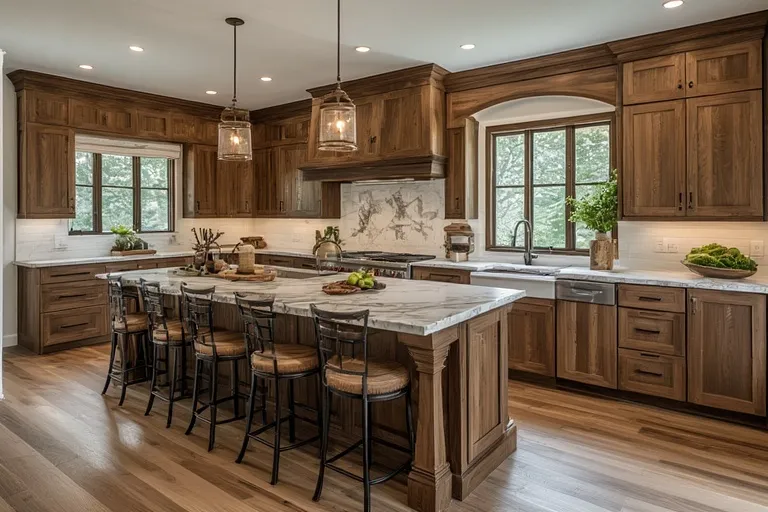
Stained kitchen cabinets remain one of the most classic and versatile options for homeowners in kitchen remodeling and interior design. Their ability to highlight the natural beauty of wood while providing a durable finish makes them a top choice for kitchens of all styles—from traditional farmhouse spaces to sleek modern interiors. In this article, we’ll cover everything you need to know about stained cabinets, including their benefits, design ideas [Transitional Bathroom Design], maintenance tips, and why they continue to stand the test of time.
Why Choose Stained Kitchen Cabinets?
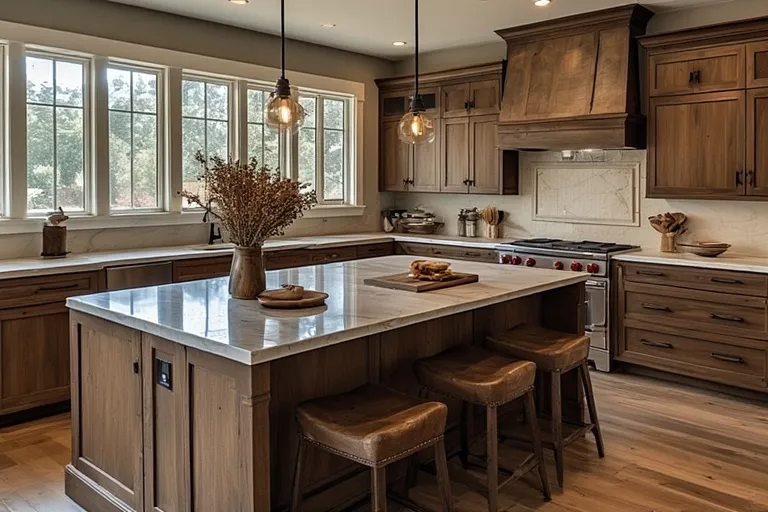
Stained cabinets are celebrated for their warmth, elegance, and natural appeal. Unlike painted finishes, stain enhances the grain and character of the wood, making each cabinet unique. This gives homeowners a rich, authentic look that feels both sophisticated and inviting.
Some key reasons to choose stained cabinets include:
- Natural beauty → The wood grain remains visible, adding depth and character.
- Durability → Stains penetrate wood, protecting it against wear and tear.
- Variety → Available in multiple shades, from light oak to deep espresso.
- Timelessness → Stained finishes rarely go out of style, making them a safe long-term investment.
- Versatility → Works well in both traditional and contemporary kitchen designs.
The Appeal of Wood and Stain Finishes
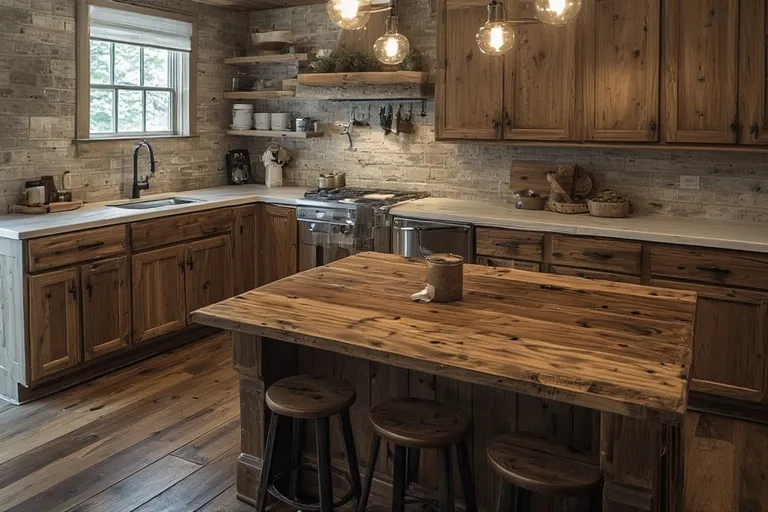
Wood has always been a premium material in home design. The way stain interacts with wood highlights its natural beauty, making every cabinet unique. Whether you prefer a rustic farmhouse kitchen or a modern minimalist space, stained finishes can adapt beautifully.
For example:
- Light stains (like maple or ash) brighten a small kitchen, giving it an airy, open feel.
- Medium stains (like cherry or walnut) provide warmth and balance.
- Dark stains (like espresso or mahogany) create a bold, elegant, and luxurious atmosphere.
Types of Wood That Work Best with Stains
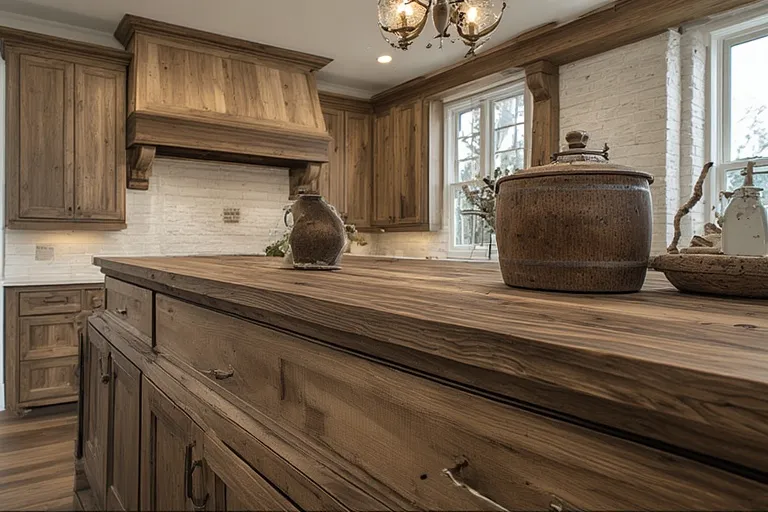
The choice of wood is just as important as the stain itself. Here are some popular options:
- Oak → Known for its strong grain, it absorbs stain well and delivers a rustic, textured appearance.
- Maple → Smooth and subtle, maple provides a clean, uniform look when stained.
- Cherry → Darkens naturally over time, making stained cherry cabinets richer with age.
- Walnut → A luxurious option that pairs beautifully with darker stains.
- Birch → A more affordable alternative that still delivers excellent staining results.
Design Ideas for Stained Kitchen Cabinets
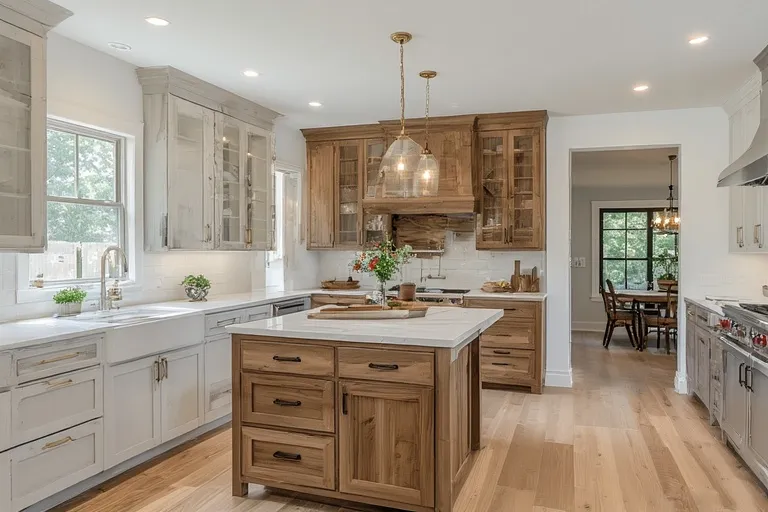
Stained cabinets are not only practical but also highly versatile in design. Here are some trending ideas:
- Two-Tone Kitchens → Combine light stained uppers with dark stained lowers for contrast.
- Rustic Farmhouse → Pair distressed stained cabinets with open shelving and a farmhouse sink.
- Modern Minimalist → Choose sleek, dark-stained cabinets with stainless steel appliances for a clean look.
- Transitional Style → Mix stained wood cabinets with painted islands for a balanced aesthetic.
- Open Concept Homes → Use medium stains to blend seamlessly into adjoining dining or living areas.
Care and Maintenance of Stained Kitchen Cabinets
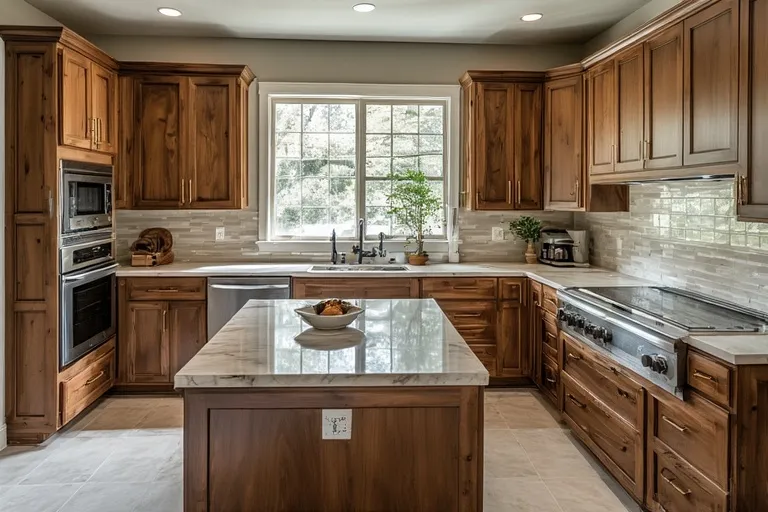
Proper maintenance ensures stained cabinets retain their beauty for decades. Here are a few tips:
- Regular Cleaning → Use a mild soap and damp cloth to wipe away grease and spills. Avoid harsh chemicals.
- Polishing → Apply wood polish occasionally to restore shine and protect the finish.
- Avoid Moisture Damage → Always wipe cabinets dry after cleaning. Excess water can weaken the stain and wood.
- Sunlight Protection → Prolonged direct sunlight can fade the stain; consider blinds or curtains if your kitchen gets strong sun.
- Hardware Care → Keep knobs, pulls, and hinges clean to prevent tarnish that could impact cabinet aesthetics.
Stain vs. Paint: Which Is Better?
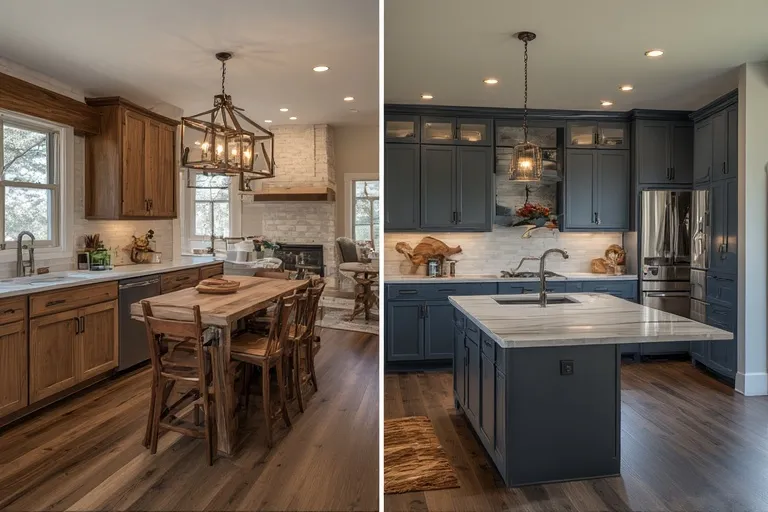
One of the most common questions homeowners ask is whether to stain or paint their cabinets. Here’s a comparison:
- Stained Cabinets → Highlight natural wood grain, durable, timeless, warm.
- Painted Cabinets → Offer a solid, uniform look, modern appeal, endless color choices.
If you love the authenticity and natural richness of wood, stain is the better choice. However, if you want bold colors or a crisp, smooth finish, paint may be more suitable.
Budget Considerations for Stained Cabinets
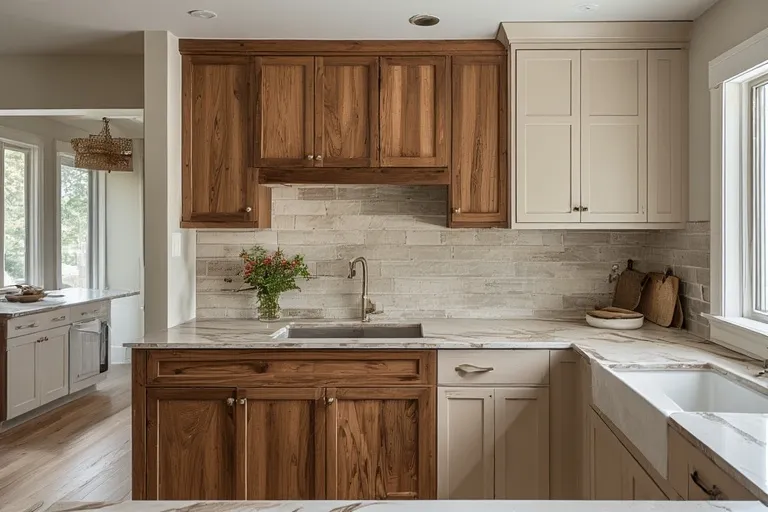
The cost of stained cabinets depends on several factors, including wood type, stain finish, and customization. Generally:
- Stock cabinets are affordable and available in limited stain options.
- Semi-custom cabinets allow you to select wood types and stain finishes.
- Custom cabinets provide full flexibility but come at a higher cost.
Stained finishes are often more cost-effective than painted finishes because they require less surface preparation.
Trends in Stained Cabinetry
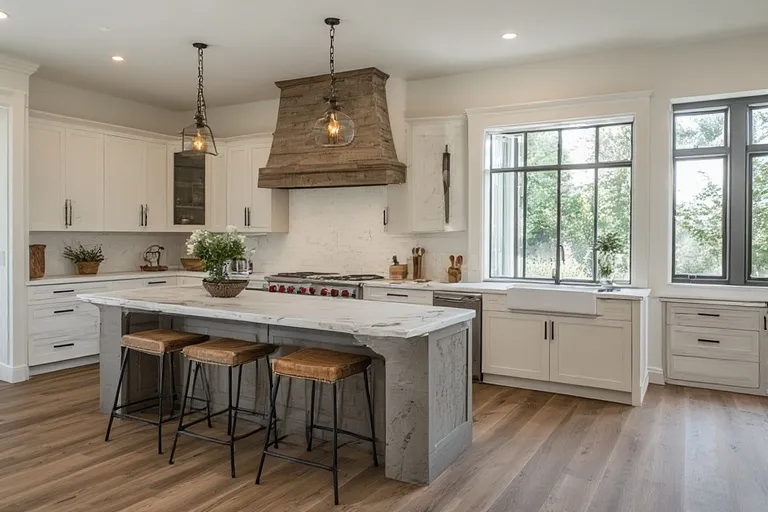
While white painted cabinets have dominated kitchen trends for years, stained cabinets are making a strong comeback. Modern homeowners appreciate their sustainability, durability, and connection to natural materials. Some popular trends include:
- Matte finishes over glossy stains for a modern look.
- Gray-washed stains that blend rustic and contemporary vibes.
- Mixing stains within the same kitchen for contrast and dimension.
- Eco-friendly finishes that use low-VOC stains and natural sealants.
Conclusion
Stained kitchen cabinets remain a top choice for homeowners who value timeless style, natural beauty, and long-lasting durability. Their ability to highlight the unique grain of wood, offer endless design flexibility, and withstand everyday use makes them a practical and elegant solution for any kitchen renovation. Whether you prefer light, medium, or dark stains, this finish will never go out of fashion—and with proper care, your cabinets can look stunning for decades to come.
Q1: Are stained kitchen cabinets still in style?
Yes, stained kitchen cabinets are making a strong comeback. They highlight the natural beauty of wood, offer timeless appeal, and fit both modern and traditional kitchen designs.
Q2: What type of wood is best for staining kitchen cabinets?
Woods like oak, cherry, maple, walnut, and birch are excellent choices for staining because they absorb stain evenly and highlight the natural grain beautifully.
Q3: Do stained cabinets require a lot of maintenance?
Not much—regular cleaning with mild soap and water, occasional polishing, and protecting them from excess moisture or direct sunlight keeps them looking new for years.
Q4: Are stained kitchen cabinets cheaper than painted ones?
In many cases, yes. Stained finishes often cost less than painted ones since they require less preparation and labor, especially with natural wood grains.
Q5: Can stained cabinets be refinished or updated?
Absolutely. Stained cabinets can be sanded, re-stained, or finished in a new shade, making them a versatile long-term investment.

One Comment